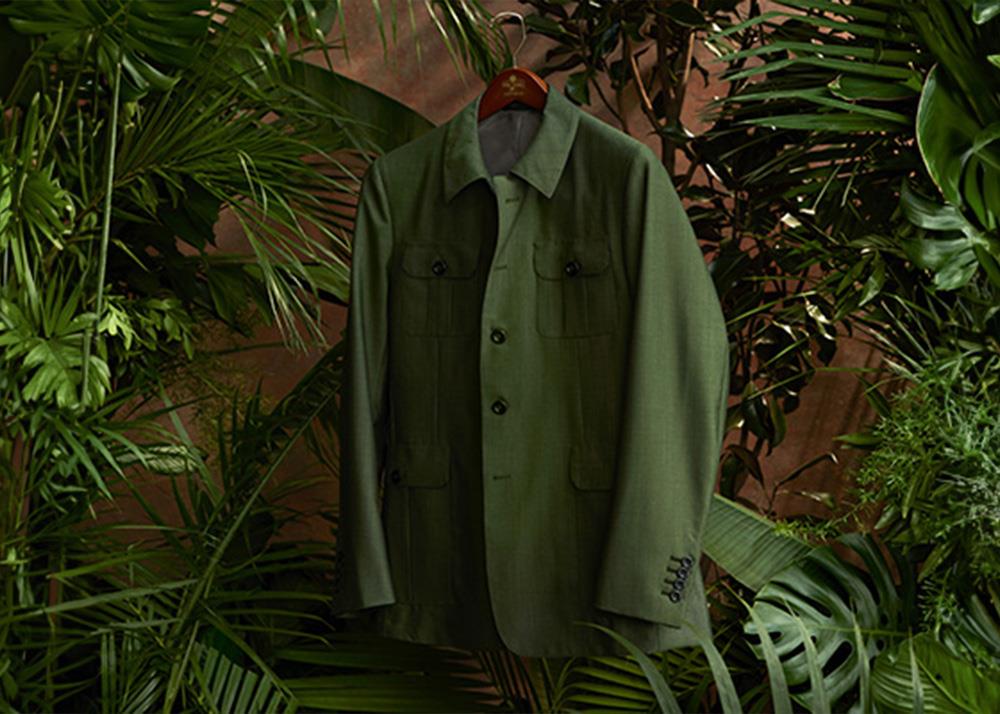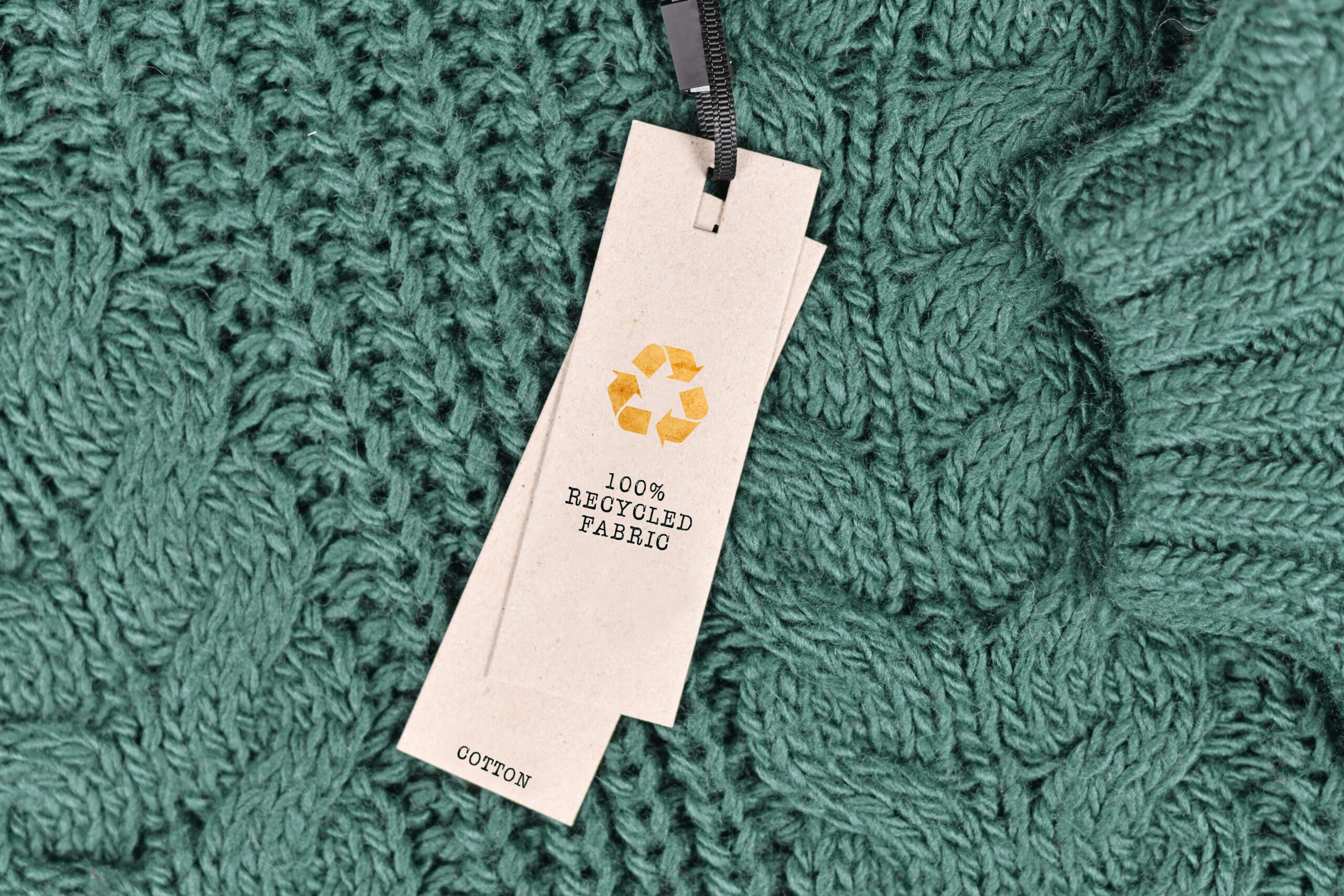Stay Ahead of the Curve by Checking Out Ingenious Style Trends
In a market as dynamic as fashion, staying ahead includes greater than simply adhering to existing fads-- it requires an expedition of development. Smart fabrics, for example, are transforming garments into useful masterpieces, while 3D printing is transforming layout procedures with its customizable, waste-reducing abilities. As sustainability becomes a foundation, technologies like environmentally friendly products and round style practices are reshaping environmental obligation - Cape Town Sustainable Fashion. In addition, the merging of innovation and fashion advertises a brand-new era of customer engagement. How, after that, can these emerging trends redefine the future of style, and what implications do they hold for brand names looking for to flourish in this developing landscape?

Embracing Smart Textiles
Over the last few years, the fashion business has experienced a transformative shift with the assimilation of smart fabrics, a sophisticated advancement that mixes innovation with material. This advancement stands for not only a fusion of appearances and performance but also a significant leap towards sustainability and customization in vogue. Smart fabrics, additionally known as e-textiles, installed innovative electronics such as sensors and conductive strings within the textile, making it possible for garments to interact with the environment or the wearer.
These textiles are designed to monitor physiological parameters, such as heart rate or body temperature, giving real-time health analytics. Beyond wellness applications, clever textiles are likewise being used for flexible garments, which can alter color or pattern in response to ecological stimulations, therefore providing a dynamic style experience.
Additionally, the advancement of energy-harvesting textiles that create power from motion or sunlight is paving the way for self-dependent wearable innovation. This advancement is attracting environmentally conscious customers and developers aiming to decrease the environmental impact of style. As r & d in this field advance, smart textiles are expected to end up being increasingly common, reshaping the landscape of modern fashion with their multifunctional abilities.
The Increase of 3D Printing
Reinventing the production landscape, 3D printing has emerged as a game-changer in the apparel industry. This advanced technology has actually allowed developers to press the boundaries of creativity, producing complex and customized garments that were formerly inconceivable. By leveraging electronic layout and additive manufacturing, 3D printing promotes the production of complicated geometries and patterns, permitting designers to trying out new textures and structures.
A notable advantage of 3D printing in vogue is its capacity to produce on-demand, lessening waste and reducing stock requirements. This efficiency not only enhances manufacturing processes but likewise enables rapid prototyping, allowing developers to bring their visions to life in a much shorter duration. Furthermore, 3D printing supports modification somewhat unrivaled by standard approaches, offering individualized fits and unique designs tailored to private consumer preferences.
The increase of 3D printing has actually also equalized style, making it accessible to emerging designers that can currently fabricate high-quality pieces without considerable economic investment in conventional production framework. As technology remains to advance, the garment industry is positioned to harness the full capacity of 3D printing, checking out brand-new products and strategies that will unquestionably redefine exactly how fashion is conceived and created.
Sustainable Style Innovations
As the fashion business faces the pushing need for environmental responsibility, sustainable style technologies have emerged at the leading edge of transformative adjustment. The expanding recognition of eco-friendly influence has actually fueled a shift towards even more eco-conscious practices and products. Brands and developers are now prioritizing sustainability, integrating techniques that minimize waste and decrease carbon footprints.
One considerable advancement is he has a good point the increase of round style, which highlights recycling and upcycling to expand the lifecycle of garments. This technique not just decreases waste but also encourages consumers to take on an extra conscious technique to apparel usage.
Another innovation depends on the adoption of ingenious dyeing strategies that make use of waterless processes or natural dyes, thus minimizing the vast amounts of water and chemicals commonly used in fabric dyeing. Additionally, innovations in biotechnology have actually resulted in the development of lab-grown leather and fabrics, supplying eco pleasant and cruelty-free options to traditional materials. Through these pioneering efforts, the fashion business is making significant strides in the direction of an extra lasting future.

Tech-Integrated Clothing
Tech-integrated apparel stands for a cutting-edge fusion of fashion and modern technology, improving exactly how individuals interact with their clothing. This cutting-edge domain name is noted by the addition of wise textiles and embedded digital parts, boosting both capability and aesthetic appeal. From physical fitness trackers installed in sportswear to heated jackets managed via smartphone applications, tech-integrated garments offers customers extraordinary convenience and flexibility.
Introducing brand names are driving this Home Page pattern, concentrating on creating garments that reply to ecological stimuli or customer commands. As an example, some garments can change color or pattern in reaction to temperature level changes, while others incorporate biometric sensors to monitor health and wellness metrics like heart rate or tension degrees. The seamless integration of modern technology right into fabrics likewise includes environmental sustainability, with efforts to create self-cleaning fabrics or garments that readjust to weather conditions, therefore reducing the need for numerous layers.
In addition, the advent of wearable innovation is not just limited to garments but prolongs to accessories like watches and eyewear, more expanding the scope of tech-integrated fashion. As the sector proceeds to innovate, the possibility for personalization and personalization in garments grows, offering customers distinct, tech-enhanced style experiences that accommodate their specific requirements and preferences.
Future of Virtual Style
In the last few years, the future of digital fashion has become a transformative force within the sector, leveraging innovations in electronic innovation to redefine exactly how style is developed, experienced, and taken in. By integrating increased truth (AR), online reality (VR), and 3D layout devices, designers can now craft immersive and interactive experiences that go beyond conventional fashion boundaries. Digital style enables the creation of garments that exist entirely in electronic settings, using unlimited possibilities for advancement without the constraints of physical manufacturing.
This digital change not only offers chances for innovative expression but additionally addresses sustainability issues fundamental in traditional style practices. Cape Town Sustainable Fashion. By removing the requirement for physical sources, virtual style lowers waste and minimizes carbon footprints. Moreover, the surge of virtual fashion lines up with the boosting customer need for distinct and tailored experiences, as digital garments can be customized and tailored to specific preferences easily

Conclusion
The fashion industry's future lies in the assimilation of ingenious innovations and lasting methods. Digital fashion is poised to redefine customer communications.
In recent years, visit their website the style industry has observed a transformative shift with the combination of clever textiles, a cutting-edge technology that blends modern technology with fabric.As the style sector grapples with the pressing need for environmental obligation, lasting style innovations have emerged at the forefront of transformative modification.In recent years, the future of virtual fashion has emerged as a transformative pressure within the sector, leveraging advancements in digital technology to redefine how fashion is created, experienced, and eaten. The rise of virtual style straightens with the raising customer need for customized and special experiences, as online garments can be personalized and tailored to individual preferences with simplicity.
The fashion industry's future lies in the integration of innovative innovations and lasting methods.